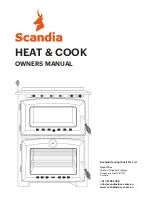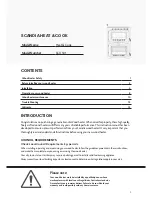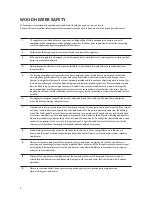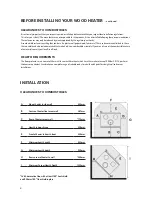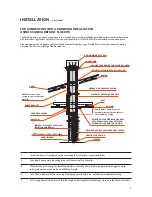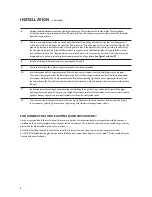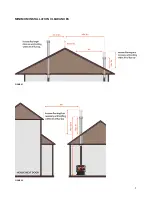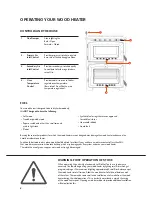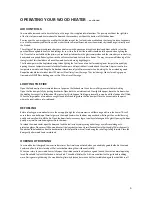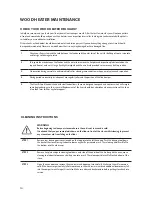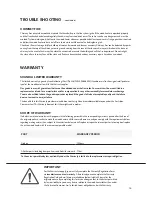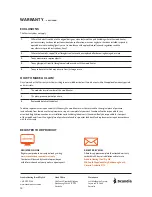
9.
OPERATING YOUR WOOD HEATER
....continued
AIR CONTROLS
Your wood heater needs air to burn the fuel, on this range this is supplied in two locations. The primary air slide at the right side
of the front of your wood heater above the door and the secondary air slide at the bottom of the firebox door.
Primary air, as the name suggests, is used for the initial burning of the fuel and is also used to keep the stove glass clean. Secondary
air is used for secondary combustion, which makes the stove more efficient, reduces the emissions by introducing air directly over
the fire bed.
The settings of the primary and secondary air control very much depends on draught and local conditions and after a few fires,
you should have a good idea of the best settings for your stove. Both air slide controls should be fully opened when lighting the
fire. Once the fire is established, the primary air can be adjusted to where the glass remains clean and the secondary air control may
be adjusted as required. Reducing the air intake will cause the wood heater to burn slower. This may cause some blackening of the
stove glass, but this should burn off once the wood heater is burning brightly again.
The flue damper must be kept closed except when lighting the fire. If oven is too hot for cooking lower temperature quickly by
opening the oven temperature control and the flue damper until required heat is reached and then close. Adjust air controls so
temperature is maintained. Keep the firebox door closed securely at all times except when de-ashing the fire or reloading wood.
Keep all combustible materials at least 1.22 metres (4 feet) away from the range. They include rugs, fabrics, furnishings, papers,
firewood, etc. NEVER dry clothing on or within 1.22 metres of the range.
LIGHTING THE FIRE
Open the fire door, lay a few crumpled sheets of paper on the firebox base then a few small dry pieces of sticks or kindling.
Open the flue damper fully by pushing backwards. Open both the air inlet controls. Now light the paper, close the fire door when
the kindling has caught fire (allow about 10 minutes for this to happen) add larger pieces of dry wood, until the fire box is half filled.
When the larger pieces of wood have caught fire, add full sized logs, close the flue damper. Close the air controls to the point
where the required burn rate is obtained.
REFUELING
Before refueling your wood heater, turn the air supply to high for a few moments until there is a good fire in the heater. This will
ensure there is no build-up of harmful gases in the wood heater when the door is opened and will also get the new fuel burning
quickly and not allow it to kill the fire. Open the door slowly in case any logs or coal have fallen against the glass. Opening the door
quickly may result in smoke being drawn into the room.
To reload the wood heater, open the door and feed the fuel in slowly always using either tongs, a small shovel along with
protective gloves. Do not overfill the wood heater. It is always better to put in small loads often rather than big fills less frequently.
Wood should be loaded in a front to back direction, this helps air flow as well as reducing the risk of logs falling forward. Close the
door gently after wood heater is reloaded.
OVERNIGHT BURNING
Your wood heater is designed to maximise burn times. Best results are achieved when you establish a good fuel bed in the wood
heater and allow it to burn for about 30 minutes before closing the air slide control fully.
When you return to your wood heater, fully open the air slide control until you have a good fire and then set to normal operating
levels. Do not add fuel until the fire bed is hot and red. Then add a little for the first time and allow that to ignite before adding
more. During overnight burning, the wood heater glass may blacken, but when a hot fire is established again this should burn off.
Summary of Contents for HEAT & COOK SCX 501
Page 2: ......
Page 9: ...MINIMUM INSTALLATION CLEARANCES FIGURE 1 FIGURE 2 7...
Page 17: ......
Page 18: ......

